Targets
3D Targeting (for trackers and photogrammetry)
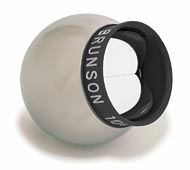 SMR Adapters are used to hold SMR targets (Spherically Mounted Reflectors, also known as Corner Cube Reflectors) in precise locations relative to important points on objects being measured. These adapters are used to position SMR targets on edges, in corners, on hole centerlines, and in many other positions so that acccurate measurements may be taken. Break-resistant reflectors are also available.
SMR Adapters are used to hold SMR targets (Spherically Mounted Reflectors, also known as Corner Cube Reflectors) in precise locations relative to important points on objects being measured. These adapters are used to position SMR targets on edges, in corners, on hole centerlines, and in many other positions so that acccurate measurements may be taken. Break-resistant reflectors are also available.
We can also offer retroreflective targets; Photogrammetric measuring systems as well as some laser scanning instruments pick up on the highly reflective dot and are able to use it as the measurement reference artefact.
2D Targeting for Alignment (Optical Tooling)
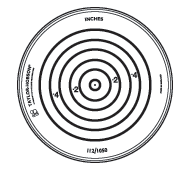 The most common type of target used for optical alignment are glass targets; these have a target pattern imprinted on a glass substrate, allowing for easy backlighting. A wide range of patterns for various applications is available.
The most common type of target used for optical alignment are glass targets; these have a target pattern imprinted on a glass substrate, allowing for easy backlighting. A wide range of patterns for various applications is available.
Mirror targets have similar patterns - these are used when both alignment and squareness to the line of sight are required.
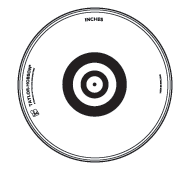 Other special targets we offer include translucent plastic disk targets and open or nylon "wire" targets which use only wires in the center (no glass). They are used for bore sighting or any application where several targets must be placed on the same line of sight. The open centre allows you to focus from one target to the next with no error from glass defraction.
Other special targets we offer include translucent plastic disk targets and open or nylon "wire" targets which use only wires in the center (no glass). They are used for bore sighting or any application where several targets must be placed on the same line of sight. The open centre allows you to focus from one target to the next with no error from glass defraction.
Tooling Scales are also available.
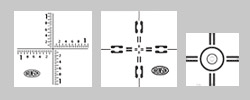 Theodolite Targeting
Theodolite Targeting
As well as the usual scales we can offer adhesive or "sticker" targets for temporary placement of reference points for a variety of reasons. They are available in various target patterns, including a graduated pattern.
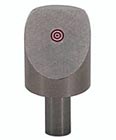 Plug and socket targets are multipurpose targets used in alignment or 3-D measurement, by instruments employing visual optics such as optical tooling or theodolites. A number of target patterns are available including single cross, multi-paired line, bull's eye.
Plug and socket targets are multipurpose targets used in alignment or 3-D measurement, by instruments employing visual optics such as optical tooling or theodolites. A number of target patterns are available including single cross, multi-paired line, bull's eye.
Invar Kits, Components & Accessories
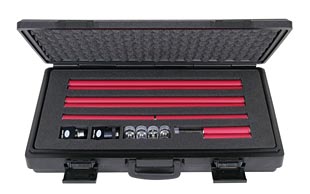 Most materials will expand when the temperature rises, and shrink when the temperature falls. The benefit of Invar is that it has a very low coefficient of thermal expansion. This means that it changes very little when the temperature rises or falls.
Most materials will expand when the temperature rises, and shrink when the temperature falls. The benefit of Invar is that it has a very low coefficient of thermal expansion. This means that it changes very little when the temperature rises or falls.
These invar kits can be used to construct scale extensions of various lengths for optical alignment applications. Various end tips are available to accommodate different types of nominal reference positions. Or the system can be used to construct known and trusted distances between targets for the calibration sequences required by laser trackers, scanners, photogrammetry systems, theodolite systems, etc.
